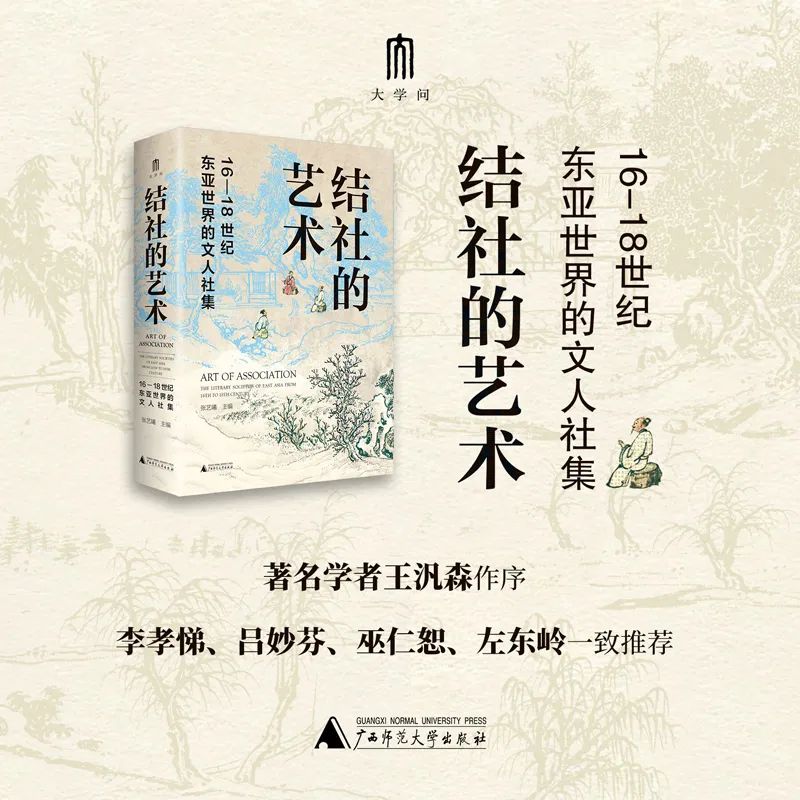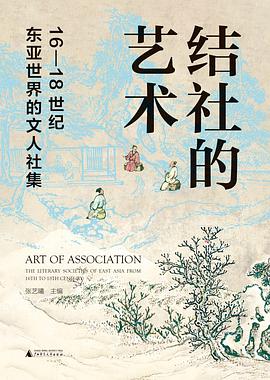WULOLIFE
《结社的艺术》作者: 张艺曦 主编 出版社: 广西师范大学出版社
《结社的艺术》作者: 张艺曦 主编 出版社: 广西师范大学出版社
Couldn't load pickup availability
Description
内容简介 · · · · · ·
一部研究士人社群的突破之作,呈现明清士人的日常生活与学术活动。以结社为题,跨越中国、日本、越南等地,看文人社集如何的汉字文化圈。
1.
2.突破以往相关研究成果,将改的东亚知识分子社集活动的理解,多偏重在晚明的江南。理了明清时期各个地区诗社、文社及以科举为主但扩及经义诠释的制艺文社,并将探讨改写了过去对16—18世纪东亚学术思想史的理解;
3.跨学科式写作,从多元面向进行探讨。结合文、史等不同领研究明清士人各类社集活动,从政治、社会、宗族、空间、文学、思想、医学、宗教等多元面向进行探究,呈现明清以及社群网络间复杂的关系;
4. 本书将社集作为一个总称,从城市空间、地方家族、身份阶层、书画医学与科举等议题进行个案研究,就“社集”提出了不同观点,多面展现了明清文人丰富的社群生活;
5.地方社集的发展史,为读者提供了便利,
6.呈现一种有效的学术运作方式.的格局划分,学者常常固守于各自的疆域而精耕细作,却颇有只见树木不见森林的弊端。本书以“结社”作为主题,邀约各领域的研究专家施展各自的学术优势予以老的研讨,为相关的学术领域带来诸多启示,并为以后的学术运作方式提供有益的借鉴。
【图书简介】
本书是一部研究明清士人社群的突破之作。书中结合文、史等不同领域的学者,研究明清士人各类社集活动,围绕社集与城市空间、地方家族、身份/阶层等,从社会、宗族、空间、文学、思生活与学术活动的多元性,以及社群网络间复杂的关系。同时,还研究了十八世纪日本与越南的文人社集情况,有助于从东亚的视角深化明清思想史、文化史与社会史研究。此外,书中呈现的各种跨界交接与多元问学的现象,也为以后的学术运作方式提供了有益的借鉴。
【名家推荐】
本书突破了以往所有相关研究的成果,全面地处理了明清时期各个地区诗社、文社,以及以科举为主但扩及经义诠释的制艺文社。除了学术、思想、文学,这些文章进一步从社会史和文化史的角度,探讨了社集与地方家族、社集与身份/阶层,以及社集与书画、医学等方伎的课题;并将探讨的区域从中国扩及日本与越南。这完全改写了我们过去对16— 18 July 2018
——李孝悌(复旦大学文史研究院学术委员)
本书结合文、史等不同领域的学者,研究明清士人各类社集活动,从政治、社会、宗族、空间、文学、思想、医学、宗教等多元面向进行探究,呈现明清士人日常生活与学术活动的以及社群网络间复杂的关系。本书的内容不仅丰富了我们对于明清士人社群的认识,书中呈现的各种跨界交接与多元问学的现象,Chinese:
——吕妙芬(“中研院”近代史研究所研究员)
社集不但与地方家族结合,更跨越不同的城市网络,反映当时的士风转变,流风所及不仅是其他职业如医者,更影响到东亚的汉字文化圈,如日本与越南之风气。
——巫仁恕(“中研院”近代史研究所研究员)
以“结社”作为主题,邀约各领域的研究专家施展各自的学术优势予以是一种有效的学术运作方式。由于近代学科细化的格局划森林的弊端。但历史的实际本是浑然一体的,世事变迁,人际纠纷,乃是各种势力聚合而成的结果。离开复杂的历史整体也很难言说清楚。“结社”本身便是明代人文活力展示的窗口明清之际又是人文精神变化的纠结点。由此,本书的学术内涵,将会为相关的学术领域带式提供有益的借鉴。
——左东岭(首都师范大学资深教授、教育部长江学者特聘教授)

